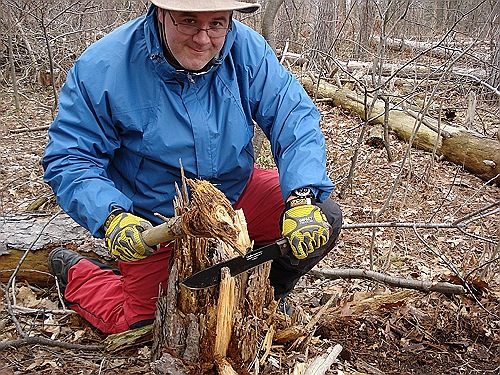FAQ: Is it ok to chop wood with my knife?
28th Jul 2015
Maybe -- but probably not.
Very few knives are designed to handle the rigors of chopping (the way an ax is, for example). A purpose-built chopper is big enough, heavy enough and possesses the proper weight-forward balance, but there's more to it than that. The blade must have the right geometry, with sufficient supporting mass behind the edge, and the steel has to be heat-treated for the chopping task.
Oh, you can try to chop wood with almost any decent-sized fixed-blade knife. You'll soon discover, however, one way or the other, what kind of knife it really is -- if you have to swing hard and apply considerable effort to make the chips fly, it's not a chopper.
The other clue that you're using the wrong tool for the job is, sadly, a damaged blade.

If it hasn't happened to you, check the Internet -- you'll find countless pictures and videos of pricey knives with half-moon-shaped chunks missing from their edges. Most often, that kind of damage results either from poor chopping technique or from chopping through an unsupported twig or branch.
Chopping something that isn't stable -- no matter how flimsy it may be -- puts asymmetric (uneven) stress on the edge of a knife. Even the best knives are prone to failure under those conditions.
If you want to chop wood, first make sure that you have a tool designed for it. With a proper chopper, very little additional effort is required -- its design, weight and balance will do the work.
( Bark River Knives, by the way, makes some excellent tools for various types of chopping. We prefer the time-tested and popular Golok ourselves, but the Bravo III, Canadian Camp Knife II and Pro Series Brush Knife are also up to the job.)
Second, make sure that the material you're chopping is stable and supported. Otherwise, you're only begging for a damaged blade.
Third, remember that the ability to chop wood really isn't built into the tool -- it's a skill. Learn how, and then practice.
Finally, you should observe one of the cardinal rules of bushcraft: Don't chop when you should cut. After all, cutting is what most knives are designed to do, and knowing how to work within a tool's limits is an invaluable skill.

